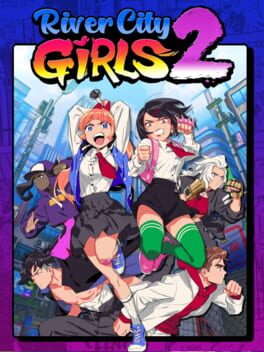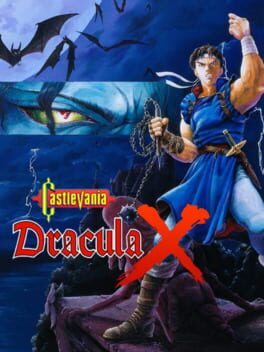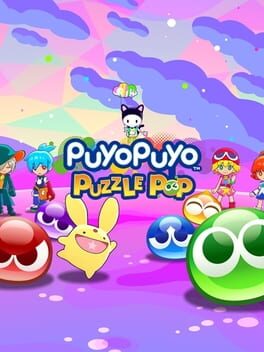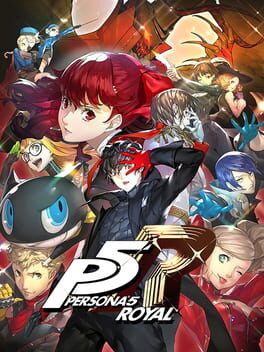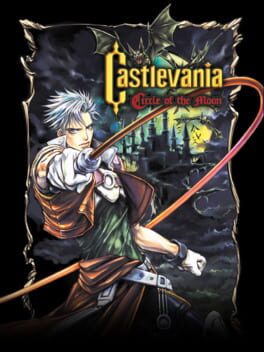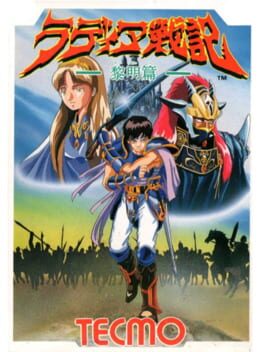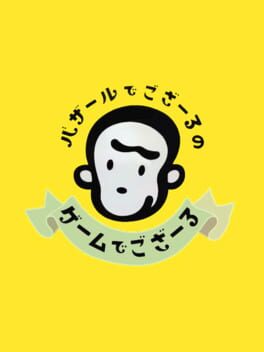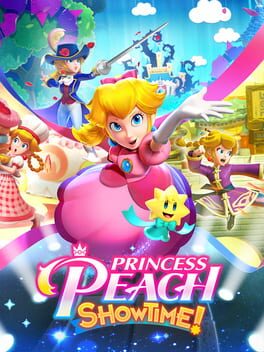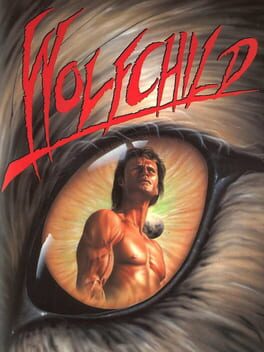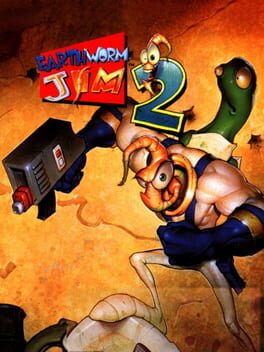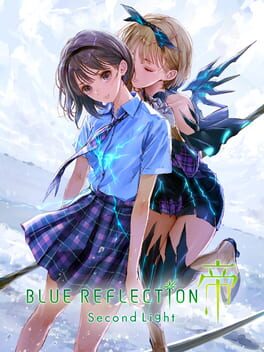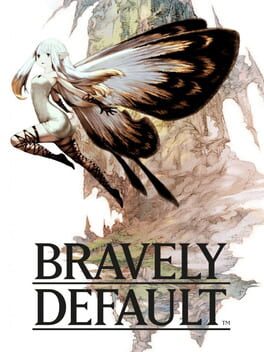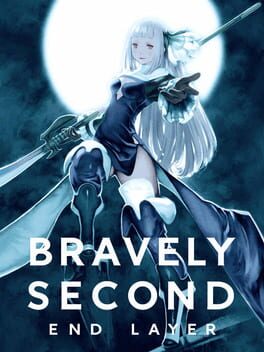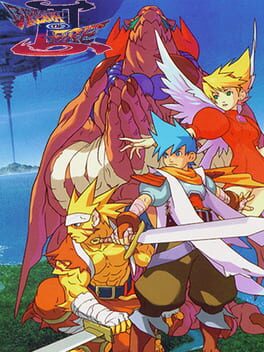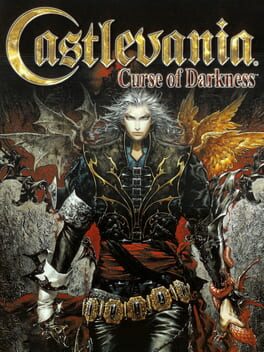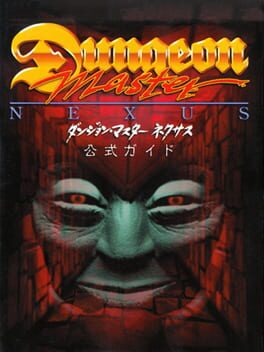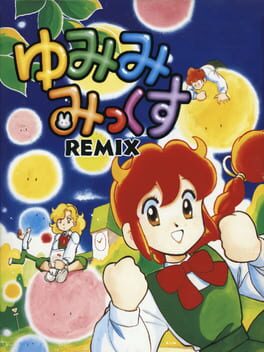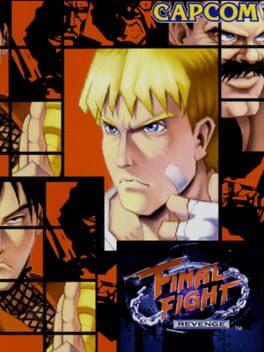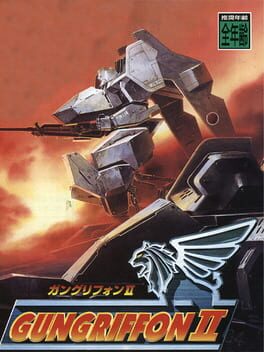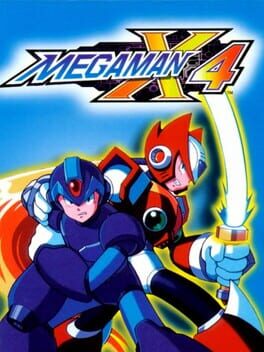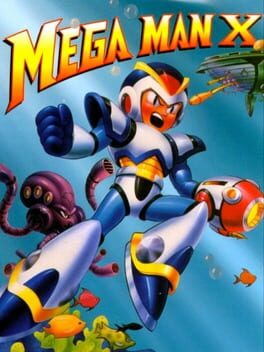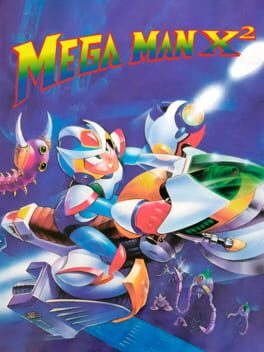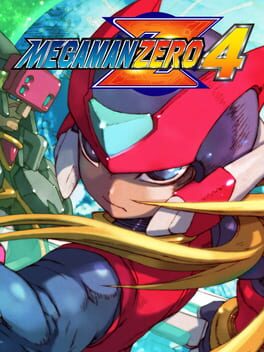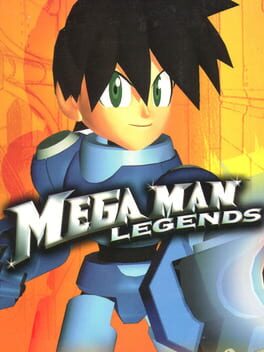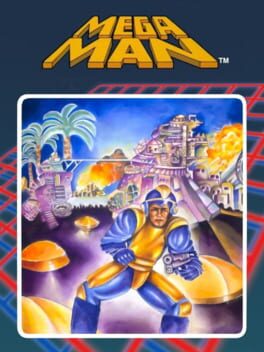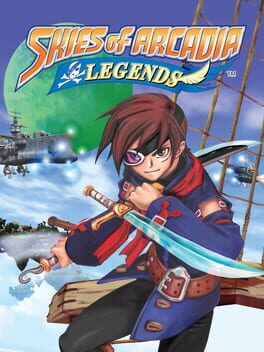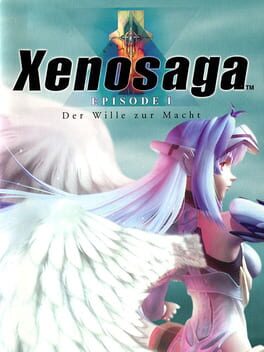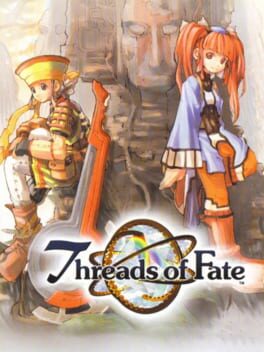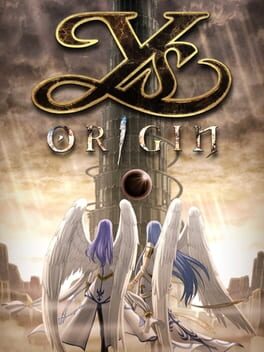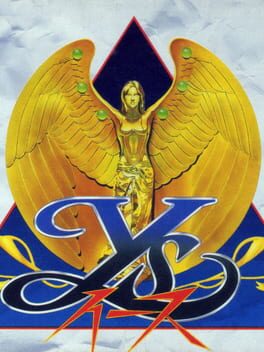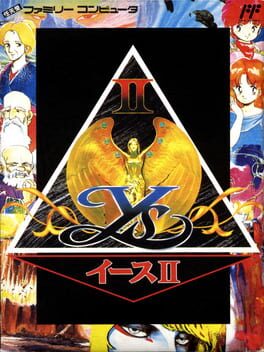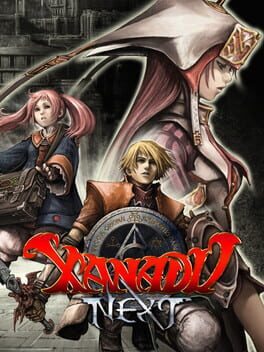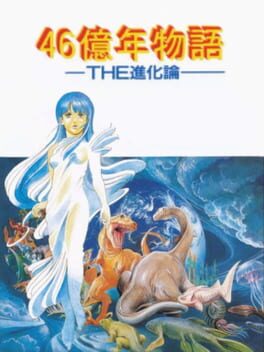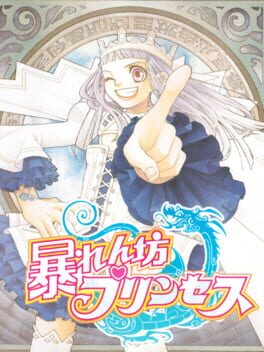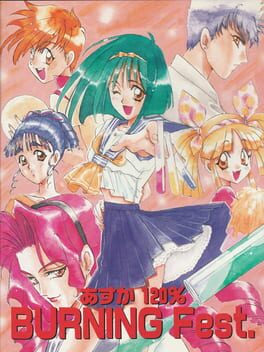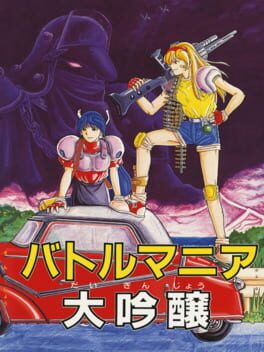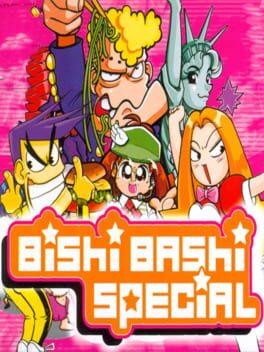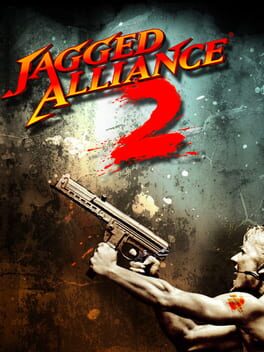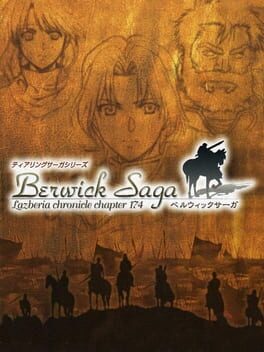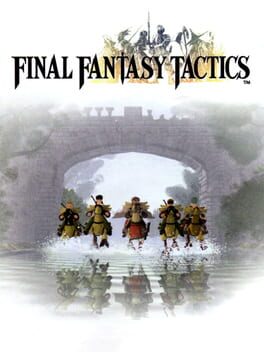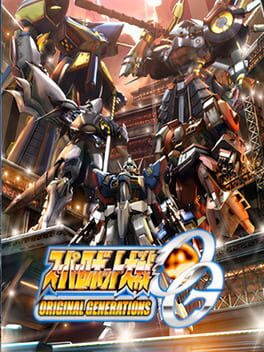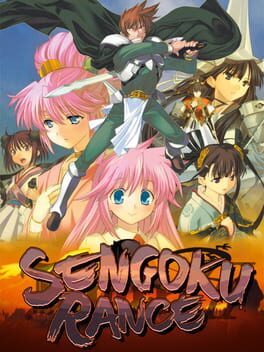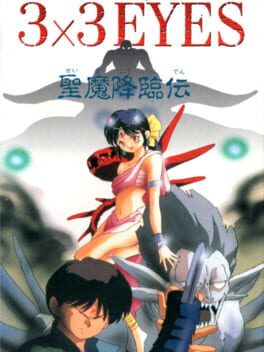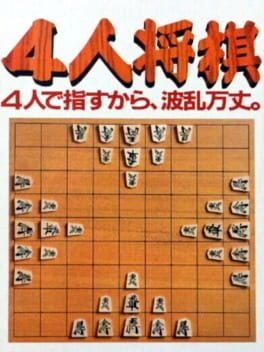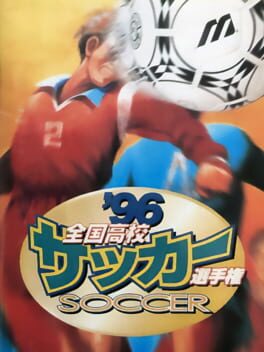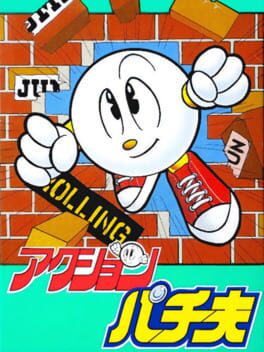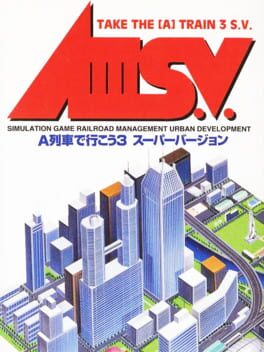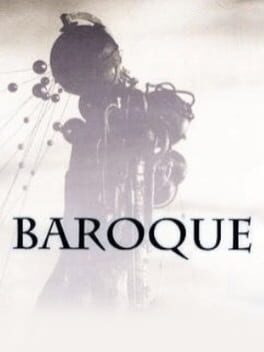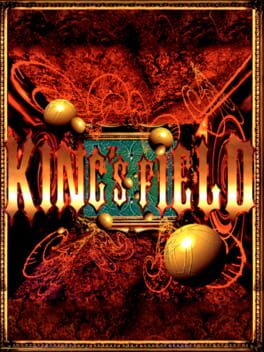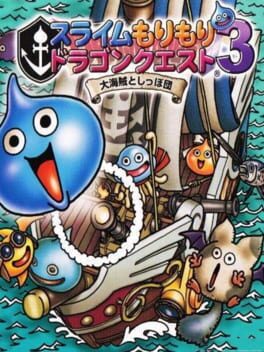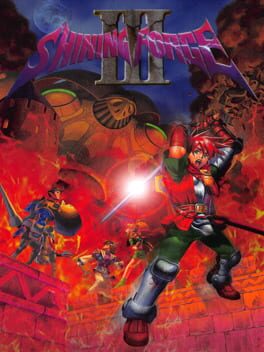Angel_Arle
942 reviews liked by Angel_Arle
River City Girls 2
2022
It's a serviceable sequel in gameplay only. Story wise this could be the cringiest thing I've ever played. And laziest. You have 6 characters, but Wayforward only wrote for 2 of them, so the other 4 have the same personality as the main 2 girls. The dialogue contradicts itself constantly because the other personalities are thrown right out the window. Legit, the 2 boss characters that join your team have complete personality overhauls once they become playable. A plotline even goes unresolved!
And how many times are we gonna have a punchline where the joke is "we are in a video game"? Y'all ain't Deadpool, knock that shit off.
Before I forget, the loading. God damn the loading. There's a loading screen for every room. Every. Single. Room. And that shit ain't short! I had the game crash on me too. It's honestly astounding why that's even the way it is. I legit made sure to play the game a year late because I wanted these problems ironed out, but I guess that's too much to ask for.
So while the gameplay has improved, the overall presentation takes a step back, making me love River City Girls 1 much more. If there's gonna be a River City Girls 3, please. Get writers who don't suck a fat one and are willing to write for more characters than just Kyoko and Misako.
And how many times are we gonna have a punchline where the joke is "we are in a video game"? Y'all ain't Deadpool, knock that shit off.
Before I forget, the loading. God damn the loading. There's a loading screen for every room. Every. Single. Room. And that shit ain't short! I had the game crash on me too. It's honestly astounding why that's even the way it is. I legit made sure to play the game a year late because I wanted these problems ironed out, but I guess that's too much to ask for.
So while the gameplay has improved, the overall presentation takes a step back, making me love River City Girls 1 much more. If there's gonna be a River City Girls 3, please. Get writers who don't suck a fat one and are willing to write for more characters than just Kyoko and Misako.
I mean, why not? When Nobunaga ruled part of Japan, and was asked for his reasoning to go after the rest, he simply went "because it's there". I'm pretty sure he said that, I was alive for it. It was essentially the same mindset I had with finishing the Advance Collection.
Known as "Vampire's Kiss" for our PALs, "Dracula X" could only be assumed to be meant as "Dracula's Hug" rather than some attempt at the 2Xtreme movement of the 90s. You see, because in here Dracula gives you a nice little hug and a peck on the cheek, all before he kicks you down a hole in his dilapidated humble abode. It makes one wonder why Dracula would even bother with floors in general when he's more than capable of flying everywhere, especially if he's already figured out that the best defense against Belmonts is to simply either make them walk up stairs, or dare them to hop with their cement-infused boots across magical levitating platforms. Where these platforms are coming from is a mystery, but I assume it's where all those holes in Dracula's throne room came from, or perhaps that's the origin of all the gaps in the grand hallway where one slip up means Richter falling into an alternate stage that denies him the ability to rescue Maria's now completely useless ass.
"Wow, thanks Richter! Good luck on your quest, I'll make my way out now."
Bitch.
It's really intriguing how a final boss fight can completely overtake discussion, and it's quite telling what the legacy of the Dracula's Smooch version of the climactic finale leaves behind when there exists an entire guide on GameFAQs dedicated to it. A useful one at that. Part of me wishes the Game Gear version of Sonic 2 would have something like that for it's first boss, but I guess there's not much to be helped there beyond "I sure hope the balls don't hit me". To say that the fight with Dracula X is a slog would be shorting it a few hundred didgeridoos, because man I could've made some tasty pancakes in the time it took trying to wait out his ass to get into an advantageous position to hit his godawful hitbox along the pillar system he installed in his throne room prior to him calling in an assist from Devil Kazuya. Kaiser Sigma from X3 would puke at all the times I uselessly cracked my whip across Dracula X's forehead and had it not register, because Konami designed this game from the ground up with anti-blockbuster rental countermeasures instead of waiting for it to come out to us, thus destroying all potential goodwill it could have found as a demake later during the age of emulation, with an audience less upset at being bamboozled out of a more faithful and less mean-spirited retelling of the beloved PC Engine classic. Instead, Switch owners will be annoyed they have to deal with this while Requiem continues chilling as a PS4 exclusive nearly six years later.
Baffling, though not quite as baffling as the censorship where they kept the blood on the title screen, but got rid of Death's Mortal Kombat Deception-style Hara Kiri where he decapitates himself with his own scythe, meanwhile Richter in our version apparently explodes into a pile of flour for Dracula X to make his cookies from.
What cookie would Richter be? Puzzling...
My opinion was ever so slightly improved from forcing myself to replay this for completion-sake, but the most heartwarming thing I get out of Dracula's Kiss personally is seeing the font used at the bottom of the title screen for the copyright, and being reminded of a childhood banger in Konami's Biker Mice From Mars which uses the same thing, so I guess I'll go play that now instead. Ciao.
Known as "Vampire's Kiss" for our PALs, "Dracula X" could only be assumed to be meant as "Dracula's Hug" rather than some attempt at the 2Xtreme movement of the 90s. You see, because in here Dracula gives you a nice little hug and a peck on the cheek, all before he kicks you down a hole in his dilapidated humble abode. It makes one wonder why Dracula would even bother with floors in general when he's more than capable of flying everywhere, especially if he's already figured out that the best defense against Belmonts is to simply either make them walk up stairs, or dare them to hop with their cement-infused boots across magical levitating platforms. Where these platforms are coming from is a mystery, but I assume it's where all those holes in Dracula's throne room came from, or perhaps that's the origin of all the gaps in the grand hallway where one slip up means Richter falling into an alternate stage that denies him the ability to rescue Maria's now completely useless ass.
"Wow, thanks Richter! Good luck on your quest, I'll make my way out now."
Bitch.
It's really intriguing how a final boss fight can completely overtake discussion, and it's quite telling what the legacy of the Dracula's Smooch version of the climactic finale leaves behind when there exists an entire guide on GameFAQs dedicated to it. A useful one at that. Part of me wishes the Game Gear version of Sonic 2 would have something like that for it's first boss, but I guess there's not much to be helped there beyond "I sure hope the balls don't hit me". To say that the fight with Dracula X is a slog would be shorting it a few hundred didgeridoos, because man I could've made some tasty pancakes in the time it took trying to wait out his ass to get into an advantageous position to hit his godawful hitbox along the pillar system he installed in his throne room prior to him calling in an assist from Devil Kazuya. Kaiser Sigma from X3 would puke at all the times I uselessly cracked my whip across Dracula X's forehead and had it not register, because Konami designed this game from the ground up with anti-blockbuster rental countermeasures instead of waiting for it to come out to us, thus destroying all potential goodwill it could have found as a demake later during the age of emulation, with an audience less upset at being bamboozled out of a more faithful and less mean-spirited retelling of the beloved PC Engine classic. Instead, Switch owners will be annoyed they have to deal with this while Requiem continues chilling as a PS4 exclusive nearly six years later.
Baffling, though not quite as baffling as the censorship where they kept the blood on the title screen, but got rid of Death's Mortal Kombat Deception-style Hara Kiri where he decapitates himself with his own scythe, meanwhile Richter in our version apparently explodes into a pile of flour for Dracula X to make his cookies from.
What cookie would Richter be? Puzzling...
My opinion was ever so slightly improved from forcing myself to replay this for completion-sake, but the most heartwarming thing I get out of Dracula's Kiss personally is seeing the font used at the bottom of the title screen for the copyright, and being reminded of a childhood banger in Konami's Biker Mice From Mars which uses the same thing, so I guess I'll go play that now instead. Ciao.
Puyo Puyo Puzzle Pop
2024
When I started this, I declared that unless anything drastic happened, it was my favourite Puyo game to date. God how that slipped by the end.
The laundry list:
- Absolutely no gameplay variety (only 1-on-1 Puyo 2 battles in adventure mode despite multiple rulesets being available in other modes)
- Very formulaic tickbox cutscenes (character has an overarching scenario which will be joked about in the first cutscene by that stage's character, said character then leaves very quickly after battle is over, no room for any development of anyone short of their assigned architype for their story mode)
- All over the place difficulty balancing (listed level is often not indicative of how hard they'll actually be because of their usage of support items, also said number decreases and increases at random anyway meaning there's no real skill curve)
- Clearly finished content being locked behind future updates (they're available to fight in the story mode being fully voiced and modeled, but only characters who have story modes are currently playable. On this note, please don't give every single playable character a story mode)
- Currently no ending in the game (I'm sure one will be patched in but to not even have an ending shows either how much of a rushjob this is or how desperately they want you to keep subscribing for the content updates in subsequent months and therefore payments)
All of this left me feeling extremely jaded with the game and honestly with Apple Arcade as a "legitimate" gaming platform in general. Great stuff has come out of it (on their final patches once the year or so of exclusivity is up mind you), but for Apple to continue to prove that they want console quality titles to be their flagships they need to ship them in a state comparable to console games. People moan about how many patches you need to do on console nowadays, but on said platforms I've never seen a game advertised as a system seller just tell you to come back for the ending in a few months time. It's ridiculous.
This game needs far more time in the oven as currently even despite the clear ambitions on show, it just isn't finished and therefore can't even begin to stack up to other far more accessible and affordable offerings in the series. Maybe in a year or so we'll see a final-ish build be shipped out to consoles and PC, but until then this isn't really worth your time, especially if you'd be going out of your way for a subscription and/or an Apple device to play it.
The laundry list:
- Absolutely no gameplay variety (only 1-on-1 Puyo 2 battles in adventure mode despite multiple rulesets being available in other modes)
- Very formulaic tickbox cutscenes (character has an overarching scenario which will be joked about in the first cutscene by that stage's character, said character then leaves very quickly after battle is over, no room for any development of anyone short of their assigned architype for their story mode)
- All over the place difficulty balancing (listed level is often not indicative of how hard they'll actually be because of their usage of support items, also said number decreases and increases at random anyway meaning there's no real skill curve)
- Clearly finished content being locked behind future updates (they're available to fight in the story mode being fully voiced and modeled, but only characters who have story modes are currently playable. On this note, please don't give every single playable character a story mode)
- Currently no ending in the game (I'm sure one will be patched in but to not even have an ending shows either how much of a rushjob this is or how desperately they want you to keep subscribing for the content updates in subsequent months and therefore payments)
All of this left me feeling extremely jaded with the game and honestly with Apple Arcade as a "legitimate" gaming platform in general. Great stuff has come out of it (on their final patches once the year or so of exclusivity is up mind you), but for Apple to continue to prove that they want console quality titles to be their flagships they need to ship them in a state comparable to console games. People moan about how many patches you need to do on console nowadays, but on said platforms I've never seen a game advertised as a system seller just tell you to come back for the ending in a few months time. It's ridiculous.
This game needs far more time in the oven as currently even despite the clear ambitions on show, it just isn't finished and therefore can't even begin to stack up to other far more accessible and affordable offerings in the series. Maybe in a year or so we'll see a final-ish build be shipped out to consoles and PC, but until then this isn't really worth your time, especially if you'd be going out of your way for a subscription and/or an Apple device to play it.
Persona 5 Royal
2019
Game was alright. Not as good as P4, but better than P3FES. The palaces got a bit tedious and I didn't really care for most of the social links so I spent a lot of this game bored. I mean it had enjoyable moments. I liked the story despite a weird ass pull about a third into the story (you know what I'm talking about), but I don't recall ever really feeling pulled into it besides for the final palace. Battles still feel as good as they always have and Persona fusion is as robust and fun as ever. The new Pokémon-esque abilities personas get are a welcome addition that really adds to fusion. Particular moments that stand out in my mind are THAT BOSS (yes, you know the one and it's not good) and the new Royal content. All in all I liked the game, I just don't think it lived up to the hype that was set up by it's community.
This game's saving grace, for me, is Kasumi Yoshizawa, who has become my favorite character in all of fiction and I will never forgive Atlus for how dirty they did her. Now if you'll excuse me, I'm off to sell off all my organs to be able to afford all her merch.
This game's saving grace, for me, is Kasumi Yoshizawa, who has become my favorite character in all of fiction and I will never forgive Atlus for how dirty they did her. Now if you'll excuse me, I'm off to sell off all my organs to be able to afford all her merch.
I'm tired.
Let's play armchair game designer, because lord knows we don't have enough of them on here.
Before you can run, you must walk, and boy does Nathan Graves enjoy walking. Nathan just adores going on a stroll in Camilla's castle while his master's getting his toenails ripped off in preparation for being slaughtered in a satanic ritual. Mr. Graves wouldn't know how to run even if I slapped his dump truck ass with the world's most painful block of wood. It's a godsend that Camilla's basement houses the very shoes he needs to be able to find the joys of exercise again after he forgot how to sprint when Count Dankula played his Trap Hole card in the introduction scene. One must wonder how long it would've taken if Drac's minions didn't make such a fuck up as to leave shoes for Mr. Graves to wear for his aching strolling feet. Even with these shoes Nathan only knows how to barrel forward with wanton disregard for his own being. Alucard had it figured out already, just run with care. That's all you gotta do. For Nathan though? Only two speeds exist. Tortoise, and drunken hare riding on a Kawasaki Ninja.
The input for running in this game is bad enough with requiring me to dash dance on the dpad and kill my thumbs, but Nathan's whip attack is noticeably sluggish compared to past Classicvania outings. It may not be noticeable at first, but try ducking and whipping and go back to playing as Simon in any of the past games and you'll definitely feel it. Nathan can jump like a stiff pong paddle and can even wall jump, and trust me I'm proud of him for being able to do so, but he should stick to his day job. Wall jumping in this is automated for at least two seconds as Nathan pauses on the wall and propels himself into the direction of enemy fire that sends him careening back down the pit that he was trying to make his way up from. You will encounter this scenario a lot, I assure you, especially with Circle of the Moon's obsession with slap dashing Armor enemies everywhere with annoying attacks that can bop you from the other side of the screen. No joke, I had a moment where I thought I was hitting an Ice Armor enemy in the underground waterway safely, only to get a very pleasant surprise in the form of another spear flying from off screen and stabbing me through the adam's apple thanks to the second Ice Armor that was behind him.
The primary system is collecting some shitty Yu-Gi-Oh cards and playing Blackjack with yourself to combine two of them and give yourself some form of power up, which could range from boring effects like your whip getting an elemental bonus, or actual cool shit like turning into a bone-throwing skeleton that dies in one hit. Unfortunately, the card for turning into a glass jawed skeleton is about 95% into the game and requires killing a very specific candle enemy that requires backtracking to a who-gives-a-shit area, and kindly asking it to drop the damn card sometime this week. This is where I get to bitch about the worst part of Circle of the Moon besides Nathan's completely useless movement, and it's the outrageous drop rates. That card that I'd need for the aforementioned skeleton transformation? The drop rate is zero point four fuckin' percent. That doesn't just effect the cards either. Health items? What are those?!
Seriously, I went for hours playing this game and didn't think healing was even a thing in Circle of the Moon besides the absurdly paltry potions that give a measly 20 hit points back, or getting to one of the sparse save points that fully heals you. Hell, you don't even get healed after boss fights. I beat probably six bosses before a piece of meat suddenly dropped from an enemy, where I double-taked and went back just to stare at it for a while. There is not a shop to speak of either, shopkeepers aren't welcome in Circle of the Moon. No buyable health items for you to help with the horrendous onslaught of tedium, but you can go ahead and enjoy all those completely useless armors you get to lug around on your person. Sure is a hard game we got here, would be nice if I could have some items, but Dracula is against formal goods trading.
Circle of the Moon is about inconvenience. It inconveniences you with movement that isn't convenient for the challenge that is set up for you as it would be for past entries. The only way to make your pathetic movement less inconvenient is to find cards inconveniently hidden away in an unknown enemy's back pocket that could potentially make certain encounters flat out trivial, like the normally problematic ice element in the underground waterway, or Dracula's nigh-impossible to dodge meteor attack in the final battle. It's all an inconvenient excuse to grind if you lack information, which this game inconveniently gives you none assuming you're not playing the Advance Collection version, which was the only convenient bit from my experience. Thanks M2.
It took me about three months to finish the save file I started on the Advance Collection a ways back after I completed Harmony of Dissonance and it's toilet noises, and it's mindbogglingly to me to realize that it was around last Christmas that I replayed and finished Aria of Sorrow again on the same collection. It wasn't necessarily a skill issue, it was a thumb issue from the horrendous dash input, and my complete apathy to this game's entire philosophy of wanting to train me on it's solitaire system only for the battle arena to give me the middle finger, and take that same system away in the ultimate show of disrespectful inconvenience. It was optional, sure, but it's existence is more than enough to make me want to transition into a volcanic state. It was even more aggravating to find out that Konami apparently bumped the experience requirements up for the western releases, thus demanding me to update the list for all the times they fucked us in the ass. I needed a lot of Picross breaks, and apparently a detour to that Peach game I didn't care about.
It kinda goes without saying, but the thought of replaying this on original hardware with the bad GBA screen, no suspend save, or in-game overlay hints of what enemies are carrying cards is less appealing to me than taking an epilator to my ballsack. I'll give it a pity star for Dracula's final boss design, I guess. I guess.
Thus concludes armchair game designer session, if you enjoyed what you've read, please like, comment, subscribe, ring the dingaling, and maybe sing me a nice song.
I'm going to bed now. Goodnight.
hoooooonkmimimimimi.
+Nathan Graves dump truck ass
+Rakugakids reference
+Yo Camilla call me
+Proof of Blood
-Nathan Graves dump truck ass
-Sinking Old Sanctuary?! More like Stinking Old Sanctuary!
-Why is my hair not as nice as Hugh's
-Where's my burrito
Let's play armchair game designer, because lord knows we don't have enough of them on here.
Before you can run, you must walk, and boy does Nathan Graves enjoy walking. Nathan just adores going on a stroll in Camilla's castle while his master's getting his toenails ripped off in preparation for being slaughtered in a satanic ritual. Mr. Graves wouldn't know how to run even if I slapped his dump truck ass with the world's most painful block of wood. It's a godsend that Camilla's basement houses the very shoes he needs to be able to find the joys of exercise again after he forgot how to sprint when Count Dankula played his Trap Hole card in the introduction scene. One must wonder how long it would've taken if Drac's minions didn't make such a fuck up as to leave shoes for Mr. Graves to wear for his aching strolling feet. Even with these shoes Nathan only knows how to barrel forward with wanton disregard for his own being. Alucard had it figured out already, just run with care. That's all you gotta do. For Nathan though? Only two speeds exist. Tortoise, and drunken hare riding on a Kawasaki Ninja.
The input for running in this game is bad enough with requiring me to dash dance on the dpad and kill my thumbs, but Nathan's whip attack is noticeably sluggish compared to past Classicvania outings. It may not be noticeable at first, but try ducking and whipping and go back to playing as Simon in any of the past games and you'll definitely feel it. Nathan can jump like a stiff pong paddle and can even wall jump, and trust me I'm proud of him for being able to do so, but he should stick to his day job. Wall jumping in this is automated for at least two seconds as Nathan pauses on the wall and propels himself into the direction of enemy fire that sends him careening back down the pit that he was trying to make his way up from. You will encounter this scenario a lot, I assure you, especially with Circle of the Moon's obsession with slap dashing Armor enemies everywhere with annoying attacks that can bop you from the other side of the screen. No joke, I had a moment where I thought I was hitting an Ice Armor enemy in the underground waterway safely, only to get a very pleasant surprise in the form of another spear flying from off screen and stabbing me through the adam's apple thanks to the second Ice Armor that was behind him.
The primary system is collecting some shitty Yu-Gi-Oh cards and playing Blackjack with yourself to combine two of them and give yourself some form of power up, which could range from boring effects like your whip getting an elemental bonus, or actual cool shit like turning into a bone-throwing skeleton that dies in one hit. Unfortunately, the card for turning into a glass jawed skeleton is about 95% into the game and requires killing a very specific candle enemy that requires backtracking to a who-gives-a-shit area, and kindly asking it to drop the damn card sometime this week. This is where I get to bitch about the worst part of Circle of the Moon besides Nathan's completely useless movement, and it's the outrageous drop rates. That card that I'd need for the aforementioned skeleton transformation? The drop rate is zero point four fuckin' percent. That doesn't just effect the cards either. Health items? What are those?!
Seriously, I went for hours playing this game and didn't think healing was even a thing in Circle of the Moon besides the absurdly paltry potions that give a measly 20 hit points back, or getting to one of the sparse save points that fully heals you. Hell, you don't even get healed after boss fights. I beat probably six bosses before a piece of meat suddenly dropped from an enemy, where I double-taked and went back just to stare at it for a while. There is not a shop to speak of either, shopkeepers aren't welcome in Circle of the Moon. No buyable health items for you to help with the horrendous onslaught of tedium, but you can go ahead and enjoy all those completely useless armors you get to lug around on your person. Sure is a hard game we got here, would be nice if I could have some items, but Dracula is against formal goods trading.
Circle of the Moon is about inconvenience. It inconveniences you with movement that isn't convenient for the challenge that is set up for you as it would be for past entries. The only way to make your pathetic movement less inconvenient is to find cards inconveniently hidden away in an unknown enemy's back pocket that could potentially make certain encounters flat out trivial, like the normally problematic ice element in the underground waterway, or Dracula's nigh-impossible to dodge meteor attack in the final battle. It's all an inconvenient excuse to grind if you lack information, which this game inconveniently gives you none assuming you're not playing the Advance Collection version, which was the only convenient bit from my experience. Thanks M2.
It took me about three months to finish the save file I started on the Advance Collection a ways back after I completed Harmony of Dissonance and it's toilet noises, and it's mindbogglingly to me to realize that it was around last Christmas that I replayed and finished Aria of Sorrow again on the same collection. It wasn't necessarily a skill issue, it was a thumb issue from the horrendous dash input, and my complete apathy to this game's entire philosophy of wanting to train me on it's solitaire system only for the battle arena to give me the middle finger, and take that same system away in the ultimate show of disrespectful inconvenience. It was optional, sure, but it's existence is more than enough to make me want to transition into a volcanic state. It was even more aggravating to find out that Konami apparently bumped the experience requirements up for the western releases, thus demanding me to update the list for all the times they fucked us in the ass. I needed a lot of Picross breaks, and apparently a detour to that Peach game I didn't care about.
It kinda goes without saying, but the thought of replaying this on original hardware with the bad GBA screen, no suspend save, or in-game overlay hints of what enemies are carrying cards is less appealing to me than taking an epilator to my ballsack. I'll give it a pity star for Dracula's final boss design, I guess. I guess.
Thus concludes armchair game designer session, if you enjoyed what you've read, please like, comment, subscribe, ring the dingaling, and maybe sing me a nice song.
I'm going to bed now. Goodnight.
hoooooonkmimimimimi.
+Nathan Graves dump truck ass
+Rakugakids reference
+Yo Camilla call me
+Proof of Blood
-Nathan Graves dump truck ass
-Sinking Old Sanctuary?! More like Stinking Old Sanctuary!
-Why is my hair not as nice as Hugh's
-Where's my burrito
I think this was a victim of being released too late into the Famicom's life to make an impact (same fate as Terranigma on SFC/SNES). It has a similar action/RPG set-up like Star Ocean. Kinda makes me think of what was originally intended for Zelda 3, as you have party members that attack on their own.
Actually really really good! Caught me extremely off-guard. Somewhere between Lemmings and modern programming games like Exapunks or Human Resource Machine, this title has you guiding a small monkey named Bazaru (the mascot for the PC-Engine system in Japan) through hazardous obstacle course by pre-loading his actions in a chain of events.
You can use simple commands like jumping and running, but also have access to wilder ones like sleeping, moon-walking, or a spin-dash-like roll.
It's short but incredibly fun, and its child-like art direction keeps it feeling fresh and bouncy even once you reach some of the harder puzzles. Definitely worth the time for puzzle fanatics.
You can use simple commands like jumping and running, but also have access to wilder ones like sleeping, moon-walking, or a spin-dash-like roll.
It's short but incredibly fun, and its child-like art direction keeps it feeling fresh and bouncy even once you reach some of the harder puzzles. Definitely worth the time for puzzle fanatics.
Normally if I enjoy a game I'd either try to have fun with my writing and do something corny like roleplaying as a character or go insanely heavy on the showmanship, but for the sake of this I'm actually going to be really vanilla and bore everyone to death.
Before I heel out, I'd like to let it be known that I was rooting for this game. When it was originally revealed in one of the Directs, I clapped, I hooted, and I hollered, for she deserves the universe and everything in it. She's an icon, she's a legend, and she is the moment. I heard it get compared to Wario World, which made me bounce off walls like Spring Wario from the classic Game Boy games. I could imagine it now, Peach womanhandling every bad guy in sight and going on an exciting journey through every genre of artistic theater known by Mushroomy Kingdom history. Unfortunately, comparing Good-Feel to even one of Treasure's lesser developments is essentially like putting silly putty next to an unpolished diamond.
"Engagement" and "difficulty" are two separate things, and it really needs to be stressed that the latter means little in the grand stage of what makes a game do what a game does, which is engage the player and take their mind off life, with the "fun yeah woo" energy replacing all their other thought processes. Spyro the Dragon and Ninja Gaiden are on opposite ends of the spectrum and still manage to be a few of my favorites to ever do it. Just a few days ago, I played Bugs Bunny Lost in Time on stream in a Discord call with one of my friends as she did some programming, and that is a game "made for children" with very little punishment dealt out for mistakes. For how jank and lower budget it was, it was fun with decent puzzles, cool ship combat, car chase segments, and even pretty good boss fights! It's something I enjoyed when I was eight, and still do now as an adult.
Peach Showtime for all of it's poor performing extravagance doesn't even use a lot of the joycon's controls, and many segments are very linear and on-rails with one of the Detective Peach puzzles quite literally having the solution put up on the wall for you. Using a simple control scheme is never a bad thing in itself, I enjoy an Atari game now and then, but the fine art of utilizing that simple control scheme demands creativity that extends beyond auto-scrolling sections that make 100%'ing the game annoying. It would also ask for enemies to master the very tricky art of "moving the fuck around a little" to justify having the world's most lenient parry window. It's frustrating, because for every half-decent powergaming moment that involves throwing hitboxes around enemies that are less threatening than beginner mode Musou soldiers it's spliced between very uninteresting unskippable dialogue, uneventful non-combat plays, auto-scrolling/auto-running sections, and "puzzle" segments that are more trivial than microwave cooking. It makes me drowsy! I've played stuff like Toy Story Activity Center off the Collection Chamber and Number Munchers last year, and that stuff was pretty fun despite the target audience! Hell, I still come back to Wacky Worlds Creativity Studio on Sega Genesis just to screw around with the music maker! It stimulates my imagination, unlike Peach Showtime!
Give kids some respect, or even better give Peach some respect. A little bit of both I feel would go a long way.
....Also, I know I'm preaching to the choir on this subject, but why does the game run so goddamn bad? The loading screen and results screen run worse than a bunch of Atari Jaguar games I've played, was it a bad style choice? It would check out I guess, I may as well be playing a movie game.
A dull direct-to-VHS Disney movie game.
Before I heel out, I'd like to let it be known that I was rooting for this game. When it was originally revealed in one of the Directs, I clapped, I hooted, and I hollered, for she deserves the universe and everything in it. She's an icon, she's a legend, and she is the moment. I heard it get compared to Wario World, which made me bounce off walls like Spring Wario from the classic Game Boy games. I could imagine it now, Peach womanhandling every bad guy in sight and going on an exciting journey through every genre of artistic theater known by Mushroomy Kingdom history. Unfortunately, comparing Good-Feel to even one of Treasure's lesser developments is essentially like putting silly putty next to an unpolished diamond.
"Engagement" and "difficulty" are two separate things, and it really needs to be stressed that the latter means little in the grand stage of what makes a game do what a game does, which is engage the player and take their mind off life, with the "fun yeah woo" energy replacing all their other thought processes. Spyro the Dragon and Ninja Gaiden are on opposite ends of the spectrum and still manage to be a few of my favorites to ever do it. Just a few days ago, I played Bugs Bunny Lost in Time on stream in a Discord call with one of my friends as she did some programming, and that is a game "made for children" with very little punishment dealt out for mistakes. For how jank and lower budget it was, it was fun with decent puzzles, cool ship combat, car chase segments, and even pretty good boss fights! It's something I enjoyed when I was eight, and still do now as an adult.
Peach Showtime for all of it's poor performing extravagance doesn't even use a lot of the joycon's controls, and many segments are very linear and on-rails with one of the Detective Peach puzzles quite literally having the solution put up on the wall for you. Using a simple control scheme is never a bad thing in itself, I enjoy an Atari game now and then, but the fine art of utilizing that simple control scheme demands creativity that extends beyond auto-scrolling sections that make 100%'ing the game annoying. It would also ask for enemies to master the very tricky art of "moving the fuck around a little" to justify having the world's most lenient parry window. It's frustrating, because for every half-decent powergaming moment that involves throwing hitboxes around enemies that are less threatening than beginner mode Musou soldiers it's spliced between very uninteresting unskippable dialogue, uneventful non-combat plays, auto-scrolling/auto-running sections, and "puzzle" segments that are more trivial than microwave cooking. It makes me drowsy! I've played stuff like Toy Story Activity Center off the Collection Chamber and Number Munchers last year, and that stuff was pretty fun despite the target audience! Hell, I still come back to Wacky Worlds Creativity Studio on Sega Genesis just to screw around with the music maker! It stimulates my imagination, unlike Peach Showtime!
Give kids some respect, or even better give Peach some respect. A little bit of both I feel would go a long way.
....Also, I know I'm preaching to the choir on this subject, but why does the game run so goddamn bad? The loading screen and results screen run worse than a bunch of Atari Jaguar games I've played, was it a bad style choice? It would check out I guess, I may as well be playing a movie game.
A dull direct-to-VHS Disney movie game.
Wolfchild
1993
Earthworm Jim 2
1995
The good levels are better than EWJ1, but the bad levels are so bad that I think someone should actually be punished for them. Whoever came up with Puppy Love and determined it needed 3 rounds? I want that guy killed, clean shot. Level Ate consantly bombarding you with enemies and salt shakers? The Iron Maiden. The sick fucking monster who brought in the Flyin' King? The Baptist Hell. Suffer endlessly.
I want to rate this higher than Earthworm Jim 1 because there is stuff I love here: the animation is even better and more expressive, the game actually makes me laugh pretty consistently, it's pretty funny! The good levels like Udderly Abducted, Tangerines, Lorenzo's Soil, and Jim Is A Blind Cave Salamander are actually FUN and have INTERESTING GIMMICKS. But the rotten is like a limb blackened by frostbite, functionless and chipping off before your very eyes, and the only thing we need to do is get it to a hospital so amputation can happen.
A game that would gain more stars if content was actively REMOVED. Puppy Love is T.E.R.R.I.B.L.E. I cannot stand by For Pete's Sake being slandered while this nightmare is given a slap on the wrist. The fucking marshmallow you have to bounce the puppies off of has the most inconsistent hitbox in a game loaded with them by a company who is bad at them. It is a level so bad that I actively encourage cheating. If something fucking stinks: cheat. Don't feel bad about it, if it sucks, skip it. Under no circumstance should you beat Puppy Love how they actually intended, because they intended you to be a gaming God who can nail frame precise movements like you are fucking Simple Flips. You are not. I am not. Skip the shitty level.
Love this music though! It's known that Tommy Tallarico did not compose any actual music in his fucking life, and he especially didn't come up with any of the really great original music here. I highly doubt he even had the inspired choice to put Moonlight Sonata in the Salamnder level. It's a very fun soundtrack that once again has its name attached to a ding dong. Can't win with this franchise!
What I suggest is attributing every bad decision to Doug, notorious shithead. Puppy Love? His idea. Flyin' King? He programmed all of it! Level Ate? He wanted MORE Salt shakers! The game goes down so much easier once you do this.
I want to rate this higher than Earthworm Jim 1 because there is stuff I love here: the animation is even better and more expressive, the game actually makes me laugh pretty consistently, it's pretty funny! The good levels like Udderly Abducted, Tangerines, Lorenzo's Soil, and Jim Is A Blind Cave Salamander are actually FUN and have INTERESTING GIMMICKS. But the rotten is like a limb blackened by frostbite, functionless and chipping off before your very eyes, and the only thing we need to do is get it to a hospital so amputation can happen.
A game that would gain more stars if content was actively REMOVED. Puppy Love is T.E.R.R.I.B.L.E. I cannot stand by For Pete's Sake being slandered while this nightmare is given a slap on the wrist. The fucking marshmallow you have to bounce the puppies off of has the most inconsistent hitbox in a game loaded with them by a company who is bad at them. It is a level so bad that I actively encourage cheating. If something fucking stinks: cheat. Don't feel bad about it, if it sucks, skip it. Under no circumstance should you beat Puppy Love how they actually intended, because they intended you to be a gaming God who can nail frame precise movements like you are fucking Simple Flips. You are not. I am not. Skip the shitty level.
Love this music though! It's known that Tommy Tallarico did not compose any actual music in his fucking life, and he especially didn't come up with any of the really great original music here. I highly doubt he even had the inspired choice to put Moonlight Sonata in the Salamnder level. It's a very fun soundtrack that once again has its name attached to a ding dong. Can't win with this franchise!
What I suggest is attributing every bad decision to Doug, notorious shithead. Puppy Love? His idea. Flyin' King? He programmed all of it! Level Ate? He wanted MORE Salt shakers! The game goes down so much easier once you do this.
67 lists liked by Angel_Arle
by Bells |
72 Games
by Reddish |
35 Games
by C_F |
69 Games
by TransWitchSammy |
3 Games
by curse |
11 Games
by 42v42 |
100 Games
by petro_sino |
43 Games
by fntm |
45 Games
